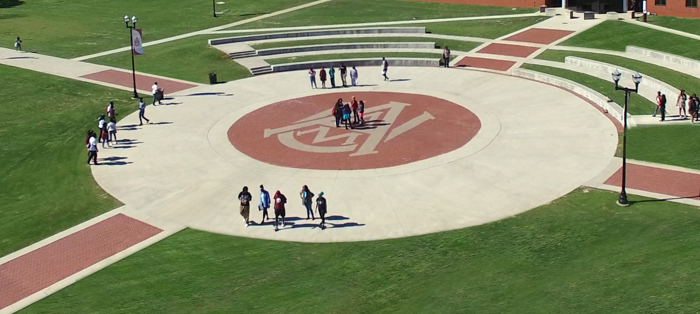
Net Zero: AAMU Solar Electric Initiative
Striving to Become a Net-Zero Campus
Alabama A&M Univeristy (AAMU) is on a mission to achieve a net-zero emissions transit system by 2031. Since 2017, AAMU’s Bus Transit System has been transitioning towards a sustainable, renewable energy future by phasing out fossil fuel buses and replacing them with battery-electric buses and related infrastructure.
AAMU received funding from the Competitive Low-No Emissions Program Federal Assistance grant for fiscal year 2023. This funding was used to expand the Bulldog Transit System infrastructure and to enhance solar energy capabilities. In addition, the institution has plans to expand its solar farm to generate at least 30 percent of campus electric energy. These efforts demonstrate Alabama A&M University’s commitment towards becoming an eco-friendly campus and serving as a model for other institutions.

Solar Array Farm

AAMU has developed a 1.3-megawatt solar farm, with plans underway to expand its capacity to 3.5 megawatts. This solar infrastructure is being integrated into a new renewable energy microgrid, supported by a battery energy storage system (BESS) to store excess power. The solar energy generated is used to power electric buses and police vehicles on campus. AAMU has relied on a 6.5-megawatt fossil fuel-based electricity system, which costs approximately 19 cents per kilowatt-hour. In contrast, solar energy is more cost-effective, ranging from just 0.3 to 4 cents per kilowatt-hour.
Electric Buses

AAMU uses the Proterra Catalyst 40-foot electric buses, which are part of the university's transition to a zero-emission fleet. These buses are the first electric buses on the road in Alabama and the first electric bus fleet among historically black colleges and universities in the nation.
AAMU introduced electric buses to the campus in 2019 and has since expanded its fleet and infrastructure to include six electric buses, two 25-passenger shuttles, two coach buses for travel, and seven 15-passenger vans for off-campus routes. Two additional electric buses are on order and the goal is to eventually acquire ten. In addition, AAMU has four electric police cruisers. As a result of operating the electric vehicles, AAMU has saved $35K in maintenance costs, $285K in fuel costs, and reduced 80 tons of emission per bus.
Bus Storage Facility

AAMU received additional funding to support the development of its electric bus program, including expanding its bus storage facility by adding more charging stations and a battery-electric storage system. The storage facility is expected to include a driver's lounge, microgrid monitoring rooms, an enclosed service bay, and an upgrade to the information system with real-time monitors.
Vehicle Charging Stations
While the focus is on the bus system, AAMU is also developing its charging infrastructure for other electronic vehicles on campus as part of its 100% net zero-emissions goal by 2031.
News
Want to learn more about how this initiative came to life? Check out the articles below to explore its development, milestones, and the impact it’s making.
Representatives Gain Key Insights on Transitioning to Electric Buses
April 03, 2025
Funding Expands Infrastructure to Support University's Clean Energy Goals
September 26, 2024
New funding will transition AAMU Transit to Zero Emission
June 27, 2023
Solar Farm a Possibility for East Campus
July 29, 2022
BTS Hosts Huntsville Transit Personnel
August 24, 2021
AAMU BTS Efforts Get $4.2M DOT Boost
July 01, 2021
AAMU Takes State's First Electric Bus to B'ham High Schools
March 05, 2020
AAMU Launches New Era with Electric Buses
November 13, 2019
AAMU Transportation Unit Awarded FTA Grant
July 24, 2019
AAMU Bulldog Transportation System Pushes Sustainable Energy
Contact Us

 Skip to content
Skip to content